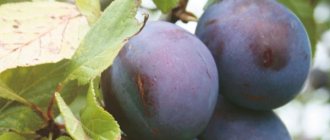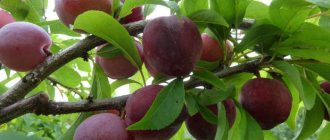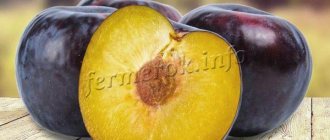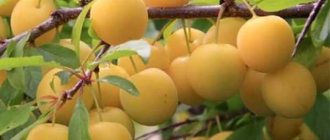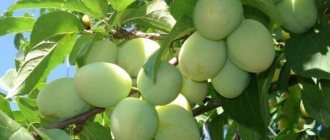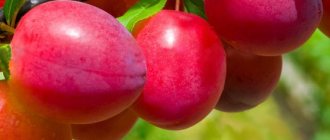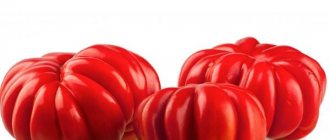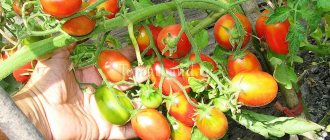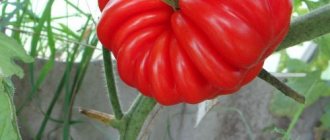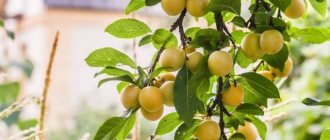History of variety selection
American selectors created an amazing plum variety, BlueFree, which was the result of crossing Stanley and President. At the end of the last century, the Blue Free plum began to be imported into the CIS countries, after which it was included in the Register of Varieties of Ukraine in 1994. It is permissible to grow BlueFree plums in the Central Black Earth region, where there is a lot of groundwater, moisture and heat.
This plum variety is resistant to heat, but not very resistant to frost. It tolerates the cold of mid-latitudes quite well, but the crop cannot be stored for a long time. This makes the demand for Blue Free small, since it is impossible to create conditions for transportation.
For private plum owners, Blue Free is suitable as an orchard tree. She loves calm weather, is immune to serious diseases, and does not require much attention and care.
Tula black plum - description and distinctive properties of the variety
The Tula Black variety belongs to the domestic plum species. Appeared a long time ago in the Tula region, through folk selection. Most likely, it was a successful seedling from a seed of an unknown plum variety and took root, spreading from neighbor to neighbor. Breeders know how difficult it is to combine the incompatible - winter hardiness and excellent taste. Therefore, the appearance of this variety is a great success. It was described for the first time in the middle of the last century by agronomist-gardener Serebro G.Ya. It is one of the ten gold varieties of the Central region. It is also called Bryansk late, Meshchevsky prune, Tula prune, Winter blue. In addition to Tula, it is widespread in the Moscow region, Kaluga region and in many areas of the North-Western region of our country.
The fruits of the plum variety Tula Black begin to ripen in early September
A low spreading tree produces its first harvest in the 4th or 5th year from the moment of planting. When planted as a grafted seedling, it begins to bear fruit earlier than a plant grown from root shoots. Pollination by another variety is not required for fruit set. But the proximity of a tree of the domestic plum type will at least double the yield.
Tula black tolerates frosts down to -35°C, but can freeze slightly with a sharp change in temperature after a thaw. Recovers quickly. The winter hardiness of flower buds is lower than that of wood. Blooms early, before the leaves open. Flowers may be subject to recurrent cold and frost. In dry summers, without additional watering, plums may crumble.
The fruits are dark blue, with a waxy coating, oval, small. They ripen late, in September. The average weight of one plum is 20–25 g, but, when rationing the ovaries, it is heavier. Sweet and sour, dense, with yellowish-red flesh. Tasting taste score: 4.1 points. The bone is small and easily separated. They can be eaten fresh, but are more often used for preparing preparations for the winter. Suitable for drying. Productivity in favorable years is high, up to 30 kg of fruit per tree. The variety is resistant to rot and other diseases.
Tula black plums that are ripe in appearance must hang on the tree for some time to gain the required amount of sweetness.
Advantages and disadvantages of the variety - table
| Advantages | Flaws |
| Productivity | Dependence of the taste of fruits on the climatic conditions of the growing region |
| Self-fertility | |
| Winter hardiness and ability to quickly recover | |
| Good taste | |
| Universality of consumption | Fruit shedding at low soil moisture |
| Well separated bone | |
| Stable fruiting | |
| Disease resistance |
Description of the Blue Free plum variety
The BlueFree plum variety has a rare crown type. It is oval in shape; the height of an adult Blue Free plum reaches almost 2 meters. Self-fertile, needs only one of the pollinating varieties. BlueFree fruits ripen quickly, which is an advantage for many gardeners. The harvest begins to be produced by the age of 3-4 years, although every year there is only more and more of it. Blue Free plum varieties are not afraid of cold weather.
Plums weigh 80 g, which is considered a fairly large fruit. They are oval in shape, but quite wide, and the color includes purple and black shades. There are also subcutaneous points that are scattered throughout the fruit in a chaotic manner. The wax coating is very dense - to get rid of it, you need to wash the fruit several times, rubbing it well.
Inside, the BlueFree plum variety has a soft and delicate filling - sweet, juicy and very tasty. For this, both adults and children love her. In the open air, the color practically does not change, which indicates the absence of acids and metals. The seed is small and comes off easily from the pulp. At the beginning of autumn you can expect the first fruits, which ripen until the end of September. BlueFree plum is resistant to diseases and pests, as well as frost or drought. There are no diseases of bark or wood. Fungal infections never appear on the BlueFree variety.
From one Blue Free tree you can harvest about 100 kg of harvest - not very much, since the fruits themselves are large and massive. Although the shape is asymmetrical, the score for the variety was 4.6 points. The dessert taste of the BlueFree variety attracts not only domestic summer residents, but also citizens of overseas countries. There is a kind of sourness. Most often you can find it in countries with temperate climates. The Blue Free plum grows better in the middle zone, although it is not susceptible to cold.
Bluefry plum variety, description, characteristics and reviews, cultivation features
Along with apple trees, plums take pride of place in our gardens. Therefore, gardeners are increasingly interested in new varieties that will delight them with an excellent harvest and ease of care. Among the numerous varieties that meet the requirements of gardeners, the Bluefrey plum stands out. But in order for the variety not to disappoint, you need to know its features.
History of the Bluefry plum
The Bluefry plum came to Europe and then Russia from America. The variety is considered one of the best works of overseas breeders and is equated to the famous Stanley plum (Stanley).
It was this variety, which had proven its popularity, that the originators used as one of the parent forms to create the Bluefry plum.
The no less famous variety President, belonging to the English selection, was taken as the second parent.
There is no State Register data on growing regions. But based on the available information, we can say that the North Caucasus region, including the Krasnodar Territory, is considered the most favorable region for cultivation. You can grow the variety in central Russia, but in terms of care there will be more trouble. In colder regions, crops may be lost due to early frosts.
Excellent appearance, taste and commercial qualities make the Bluefry plum a desirable fruit for supermarkets
Description of the variety
The Bluefry variety tree is tall - some specimens reach seven meters in height. The plant shows especially active growth in the first years after planting. But after entering the fruiting period, growth stops. The wide oval and spreading crown is formed by shoots extending from the trunk at a large angle. The foliage is average.
The Bluefry plum is famous for its fruit. They are large and very large. The average weight of a plum is 60 - 70 g, but larger fruits often ripen - about 100 g. Plums look attractive, although the round-oval fruits can be called asymmetrical. The skin color is dark purple, with a bluish waxy coating. There are subcutaneous points.
Ripe pulp is yellow, dense in consistency, but quite tender and juicy. It may be difficult to separate from the pit. The cut of the pulp practically does not darken in air. The taste is excellent. Ripe plums have a sweet, honey-like taste. Some tasters detect a slight sourness, but overall taste quality is rated at 4.6 points.
The dense pulp of the Bluefry plum, even at full ripeness, can withstand transportation and storage
Characteristics of the Bluefry variety
Bluefry plum has a very attractive set of characteristics:
- entry into the fruiting period occurs in the 3rd – 4th year, so the Bluefry plum can be called a fast-bearing variety. Peak yield occurs at 10 years of age;
- Bluefry's yield indicators are excellent, for which the variety is valued. In good years, up to 90 kg of fruit can be removed from one tree. It is worth noting the constancy of fruiting;
- In terms of ripening, the variety is classified as late. In the Krasnodar Territory, the harvest is harvested in the second half of September. In the Rostov region, taking into account climatic conditions, fruit harvesting begins in early October;
- The high frost resistance of the Bluefry variety is also appreciated. According to some sources, plums can tolerate -32°C and even bear fruit after snowless winters;
- immunity is good. The variety is resistant to scab. There is information about low susceptibility to fungal diseases, as well as to diseases of bark and wood;
- Drought resistance is average. In the southern regions, in the absence of normal watering, the tree may suffer.
Purpose of fruits
Bluefry plum fruits are versatile in use. First of all, they are, of course, intended for consumption in their natural form. But they can also be processed into preserves, jams, and compotes. Fruits are well suited for drying (you can make prunes) and freezing.
Bluefry is a supermarket favorite. The large size of the fruits and their excellent presentation are highly valued by buyers. In addition, the late ripening period makes the variety an excellent source of living vitamins during the period when seasonal fruits have long since passed away.
Bluefry plums can be used to make excellent prunes.
Features of fruit harvesting
The skin of the Bluefry plum turns dark long before the onset of biological ripeness. Therefore, Bluefry plums are often harvested at the technical ripeness stage.
In this state, it is easily transported and stored for a long time. It is these qualities that are so valued by retail chains.
And although the fruits ripen during storage, their taste will be different from fruits ripened on the tree.
If you leave a plum on the tree, it will acquire a honey taste literally a week before the harvest begins. And, despite the fact that the pulp softens at this point, the fruits do not suffer much during transportation.
At home, Bluefry plums can be stored in the fruit compartment for up to 3 months. When frozen, the period doubles or even triples. But, despite the dense pulp, repeated freezing will reduce the quality of the fruit.
There is no need to rush into harvesting Bluefry plums, as the dark color of the skin appears much earlier than ripeness.
Features of cultivation
Bluefry plum can be planted in autumn or spring, taking into account the climatic characteristics of the region.
Planting and care are no different from growing other varieties of plums. But still there are nuances:
- Watering should be moderate in regions with sufficient rainfall. In the southern regions, the frequency of watering can reach up to 3–6 times per season, depending on the temperature and the presence of precipitation;
- pruning is a mandatory procedure when growing a variety. After crown formation is completed, sanitary pruning and thinning are carried out as necessary. But starting from the age of 10, the Bluefry plum must be rejuvenated by shortening the main branches to strong tops; fruit branches are formed from the tops on the plum
- if the variety is grown in a warm region, the trunk does not need to be insulated. In cool regions, young trees should still be protected from possible temperature changes.
Rejuvenating pruning of the Bluefry plum is best done in the spring, before sap flow begins.
Bluefry plum pollinators
The Bluefrey plum is considered partially self-fertile. It will produce a harvest even without additional pollination. But the quality and quantity of fruits will be far from the standard.
In order for the plum to show its true capabilities, it needs to be paired with a suitable variety for pollination. And there are many of these for Bluefry, so you can choose one or two to suit every taste.
The following varieties will cope best with the task:
- Stanley;
- The president;
- Anna Shpet;
- Empress;Amers;
- Opal;
- Vision.
If the size of the garden does not allow planting another tree, then a branch of one of the pollinators can be grafted into the crown of the Bluefrey plum tree. This method really works, saving space and improving yields.
Plum Anna Shpet is one of the varieties suitable for pollination of Bluefry
Reviews about the Bluefry variety
Growing Bluefrey plums is a pleasure. But good immunity and the ability to withstand frosts must be maintained with proper care.
Also, by observing all the nuances of agricultural technology, you can get a harvest of delicious plums in a short time.
And with age, Bluefry will generously reward the caring gardener with an excellent harvest of plums, which will be enough to eat, treat neighbors, and stockpile for the winter.
[0 Average: 0]
Source: https://orchardo.ru/43025-sliva-blyufri-opisanie-sorta.html
Characteristics of the variety
Gardeners love the BlueFree plum variety for its benefits and ease of care. Of course, there are pitfalls, since the difficulty lies in preserving the plum variety. At the moment of fruiting, the crown weakens. And so that it continues to bear fruit, farmers prune the branches so that two-year-old shoots remain. Additionally, for a larger harvest, summer residents plant plum varieties Opal, President, Stanley or Anna Shpet.
Where the summer is hot and there is minimal rain, the plum ripens quickly - within a week, but the main thing is that the harvest does not spoil the branches. The BlueFree plum will also grow well in the Moscow region, especially on the south side. The winds are not terrible, but it is better to avoid them.
Important! The plum of the Blue Free variety ripens only by September, but acquires color already on the 4-5th day. Therefore, it is better to wait for ripening than to eat half-ripe dark fruit.
Drought resistance, frost resistance
The BlueFree plum variety has good commercial qualities. For transportation, it is enough to create a comfortable temperature. It will keep in the refrigerator for several months without spoiling. It is advisable to place it on the bottom shelf.
It is preferable to choose warm areas in the garden for growing, but the BlueFree variety will not freeze in winter. It does not require additional insulation during frosts, which is convenient for mass planting.
Plum pollinators
The BlueFree variety is self-fertile, so next to the plum you need to plant the Vision, President, Opal, Stanley, Empress, Roush or Verita variety. The more pollinators, the higher the harvest will be next year.
Productivity and fruiting
The yield of BlueFree depends on the time of planting and pollinators. The more of them there are next to the Blue Free plum, the greater the chance of getting a big harvest. Homemade plum BlueFree loves feeding.
Area of application of berries
Blue Free is a plum variety that is suitable for the production of prunes, dried plums, and canned goods. Transportation and storage are allowed. This is a universal variety that is convenient to use for home purposes (compotes, jams, freezing) and industrial purposes - products canned in their own juice, dried fruits and preparations.
Resistance to diseases and pests
Homemade plum variety Blue Free never gets sick, but prevention is required to protect against weeds and rodents. There is also a need for fertilizing so that the yield is better in terms of characteristics.
Important! If the fruits are small and sour, it means that the summer was cold and the tree did not receive enough vitamins and minerals.
Advantages and disadvantages of the variety
Among the disadvantages of Blue Free, one can highlight the need for constant pruning of the crown to increase the growth of new branches and yield, respectively. The advantages here are obvious - large, sweet fruits of high quality, unpretentiousness to weather conditions.
Plum
For a long time now, all my free time has been devoted to the garden. I will tell you from my experience about the Blue Free plum tree variety and the necessary theory that you need to know for successful cultivation.
Description and characteristics
The Blue Free plum is the work of American breeders, created from the President and Stanley varieties. It was first brought to European countries, only after arriving in Russia.
According to available information, the best region for this plum is the North Caucasus. In the middle zone it is also realistic and possible to grow a plum tree of this variety, but it will be much more difficult. In colder places there may be no harvest at all.
The tree of this variety is tall. Some can reach seven meters in height. The peak of growth activity is the first couple of years after planting. It falls after the fruiting period.
The fruits of this variety are large (usually growing up to 60-70 grams, but sometimes even 100 grams). The skin is dark purple. The pulp of plums is yellow, dense, juicy. People note that the taste of the fruit has honey notes. Withstands transportation and storage.
The tree begins to bear fruit 3-4 years after planting in the ground. The most productive season is 10 years of life. From one plant you can collect up to 90 kilograms of plums.
Blue Free is a late-ripening variety that ripens by the end of September. In colder conditions, harvesting occurs as early as October. The variety can withstand temperatures down to -32 degrees Celsius.
The variety is endowed with good immunity. For example, it withstands scab. Partially able to tolerate dry weather, but in the southern regions it will suffer without proper watering.
For transportation, the fruits are removed before they are fully ripe. Such fruits, ripened in storage, will have a slightly different taste in contrast to plums ripened on the tree. The skin darkens before the plum itself ripens. It is recommended to collect as late as possible.
Can be stored for up to 3 months. Frozen video lasts 2-3 times longer. Re-freezing is not recommended.
Landing
It is recommended to plant seedlings in the fall, around October. If frost occurs, then postpone planting until spring (after the thaw has passed).
When choosing a planting site, make sure that the soil is fertile, preferably that there is groundwater. Also, remember that shadows and penumbra have a negative effect on the tree. Blue Free can only be planted next to pollinating varieties; the rest should be avoided.
Dig a hole measuring 60 by 70 centimeters. Get rid of weed crops. Place warm soil at the bottom. If the soil is infertile, then it needs to be fertilized with ash, compost or humus. Or you can place a 1:1 mixture of superphosphates and potassium salt (1-2 tablespoons is enough).
To properly plant a new plant, follow the following algorithm.
- Create a hole according to the rules above;
- Carefully place the seedlings into the hole;
- Affected roots and branches are cut off;
- Fill the hole with soil;
- Compact the ground with your foot;
- Create a hole from lumps of soil;
- Mulch the hole;
- Water the seedling. You will need approximately 3-4 buckets or 50 liters.
Watering
If you live in the southern region or simply in a place with an arid climate, you need to water the plum tree yourself more often. The soil should be regularly moist around the trunk. 30 days before harvest, you need to stop watering and resume before wintering.
Circumcision
After the tree reaches ten years of age, it is necessary to carry out so-called “anti-aging” pruning. Before this, you need to regularly trim the branches, getting rid of dried, diseased, heavy and too long ones.
Top dressing
In order for the plant to survive the winter well, it needs to be fed with fertilizers containing phosphorus and potassium. To do this, mix a spoonful of superphosphate and potassium chloride. Till the soil with a rake and spread the fertilizer.
Pollinators
This plum variety is only partially self-fertile. No, it can bring you a harvest if there is no additional pollination. But the quality of the fruits will be very different from the norm and standards. It is still recommended to plant the following varieties nearby so that the plums grow beautiful.
- Plums of the "President" variety;
- Empress plums;
- Vision plums;
- Amers plums;
- Stanley plums;
- Plums of the "Opal" variety;
- Plum variety "Anna Shpet".
If you don’t have enough space for an additional tree, then you can actually graft a branch of one of the above pollinators onto the crown. Tested by the experience of many gardeners: it saves space and helps improve the harvest.
Diseases and pests
“Blue Free” is famous for its good immunity, so you can refuse medications. To protect the tree, it is enough to carry out the following measures.
- In autumn, collect fallen leaves and dispose of them;
- In late autumn, dig the soil around the plum tree deeply;
- Don't forget to prune diseased branches;
- Whitewash wood;
- Don't forget to build trapping belts on the trees.
In addition, it is possible to carry out treatments with biological preparations as a preventive measure. It's not obligatory. Once every two to three weeks, treat with Fitosporin-M according to the instructions. Thanks to humic acids, this will also feed the plant.
To protect yourself from parasites, you need to whitewash the wood. Mix fresh mullein with clay, then add ash, pour in water and urea. This whitewash lasts for a long time and nourishes the plant during rains.
Reviews
- Dmitry: “According to my observations, the Bluefree variety is of better quality than the same Stanley.” Winter hardiness is more developed, or something.”
- Marina: “We have collected the first harvest from Bluefree.” So far the tree hasn't gotten sick, fortunately. The fruits are very tasty, they appeared late.”
- Svyatoslav: “Take the Blue Free variety from honest people, you won’t regret it later. I live in the middle zone, its frost resistance allows it to be grown in our weather conditions. The plum appears late and tastes simply wonderful. But the fruits are large, the tree doesn’t get sick, it bears everything.”
Conclusion
- Blue Free is considered one of the best works of colleagues overseas. It is equated almost to the Stanley variety, which, by the way, is one of the progenitors of Blue Free;
- The southern regions of Russia are best suited for growing this variety, but it can also be grown in the middle zone;
- The taste of the variety is incredible, it gives off notes of honey if the fruit has ripened on the tree;
- Withstands transportation and long-term storage;
- Blue Free is a supermarket favorite along with Stanley;
- It is recommended to plant in bright areas with fertile soil. It is best if there is groundwater;
- In dry weather, it needs additional frequent watering, otherwise it may even dry out;
- Upon reaching the age of ten, it requires anti-aging circumcision;
- To ensure a large and high-quality harvest, you need to plant it next to pollinating varieties, or graft a branch of one of these varieties into the crown;
- Possessing good immunity, plants of this variety can easily cope without chemical treatments. It is enough to follow a number of basic rules that will help save the tree from parasites and diseases;
- The plant must produce whitewash. In addition to its protective function, it can nourish the tree in wet weather.
Source: https://sornyakov.net/frukty/sliva-blyu-fri.html
Planting and caring for BlueFree plum
Blue Free plum needs care before and after planting. To carry out the planting process correctly, you need to follow the rules. Then you can hope for a better result in at least 3 years.
Recommended timing
It is best to plant BlueFree plum in the fall, when October arrives, but there is no frost yet. If cold weather sets in, planting is postponed until spring, when the thaw period has passed.
Choosing a suitable location
The soil for Blue Free must be fertile and have groundwater. This is a feature of Blue Free plums. The rootstock is necessary for the growth of the tree, as it tolerates both heat and cold. The feeding zone is in the range of 4-6 m for mature trees, and for semi-dwarf trees it is enough to create a 3-4 m area.
What crops can and cannot be planted nearby?
It is advisable to avoid plum varieties other than pollinators near Blue Free. You can limit yourself to only two varieties, if desired.
Selection and preparation of planting material
If the holes are not prepared in the fall, the digging algorithm is carried out in the spring. To do this you need:
- Clear the ground of weeds.
- Fill the bottoms of the holes with warm earth to warm them up.
- The dimensions of each place are 60 x 70 cm.
- Infertile land requires preparation.
You can fertilize the soil for Blue Free using wood ash, humus, and compost. It is allowed to mix all substances to uniformly feed the tree. Substitute elements are considered to be superphosphates and potassium salt in a 1:1 ratio in the amount of 1-2 spoons. This will be enough for the seedling for 4 years.
Landing algorithm
After planting the Blue Free plum seedlings, the ditch is filled with soil. Damaged branches and roots are trimmed to prevent them from getting burned. After this, you need to trample the ground with your foot so that the toe points towards the standard. Next, a hole is formed from “rollers” of earth into which water is poured. You need to prepare about 50 liters of water, 3-4 buckets for each tree. The hole should be mulched, that is, covered with peat or humus. A layer of up to 12 cm is quite acceptable for BlueFree plums.
This way the soil will not dry out in the heat, and the tree will not need additional watering. If trees are grafted, the location should be 15 cm above the soil level.
Important! If planting is done closer to summer, there is no rain, it is recommended to water the seedlings for 2-3 days in a row according to the same scheme.
Planting Bluefry plum variety
The rules for planting Bluefry plums are the same as for plums of any variety. For beginning gardeners, let us briefly recall the main points of this process step by step:
Recent Entries
5 working ways to use tar in the garden 7 indoor plants that help you get married even in adulthood Indoor plants that can bloom in trouble
- Select the landing date. As usual, for the southern regions it is preferable to plant seedlings in the fall after the end of leaf fall, but about a month before the onset of cold weather. In more northern regions, it is better to do this in early spring before the onset of sap flow (before the buds swell).
- We prepare the planting hole in advance - at least two to three weeks before planting. If planting is planned for spring, then it is better to prepare the hole in the fall. Its dimensions should be approximately 0.8 m in depth and the same in diameter. To fill the hole, you will need nutritious soil, which is prepared by mixing equal amounts of chernozem, humus, peat and coarse river sand. Other options are possible at the discretion of the gardener.
The planting hole is filled with nutritious soil
- A few hours before planting, the roots of the seedling should be soaked in a solution of a root formation stimulator (Heteroauxin, Kornevin, Zircon, etc.) in order to ensure faster and better survival of the plant.
- Then we plant the plant as usual - straightening the roots well and compacting the soil layer by layer when backfilling. At the same time, we make sure that the root collar ends up at soil level or a couple of centimeters higher.
Plum is planted in the same way as any fruit tree.
- After backfilling and forming a tree trunk circle, water the soil generously until the watering hole is completely filled. After water is absorbed, repeat watering twice more.
- We make the first pruning of a young tree by shortening the central conductor to a level of 0.8 - 1.1 m. If the seedling has branches, then we shorten them by half.
Aftercare for plums
In winter, seedlings do not need to be watered, just pruned. It is carried out without fail by removing unwanted branches. The shoots become damaged or deteriorate – they need to be removed from the tree. In the spring, the soil is loosened - the area around the seedlings is dug up for the next 2 years. Weeding is also necessary.
Important! If there is no pruning, Blue Free will not be able to absorb enough moisture, despite watering and fertilized soil. In a new place, you need to monitor the Blue Free plum so that it takes root.
Formation of the crown of the Blue Free plum
The crown of young trees is formed within 2-3 years. This event is held every season, especially in the spring. It is necessary to carefully remove dry shoots from the BlueFree plum variety and create a round crown. If the temperature in spring (May) is below +10 0C, sap flow stops, which means a transplant is required.
Diseases and pests, methods of control and prevention
The BlueFree plum variety is immune to diseases and pests. There is no need to treat the tree with drugs or protect it from rodents and pests in the garden.
Bluefry plum: description and characteristics of the variety, features of care and cultivation, yield, photo
Bluefry plum has American roots and is one of the best varieties, and thanks to its high yield and excellent taste, it quickly won first place in the ranking of favorites of experienced gardeners. In order not to be disappointed in the variety and get a good harvest of quality plums, we recommend that you familiarize yourself with the features of growing and caring for Bluefry at home.
Characteristics and description of the variety
The plant of the Bluefree variety is tall, some specimens can reach 7 m in height, the average height of the tree is 3–5 m. The tree grows especially actively in the first 2 years after planting the seedling in the soil.
When the fruiting period begins, growth slows down significantly, so the plant directs the main forces to the formation and nutrition of fruits. The crown of the tree has an oval shape, but at the same time it is quite wide and spreading.
The branches extend from the central trunk almost at right angles.
The variety is highly valued due to its large, beautiful, round-oval fruits. The weight of one plum reaches an average of 70 g; larger fruits are often found - about 100 g.
The plum has a dark purple skin and a light waxy coating on the surface. Ripe plums with dense yellow pulp, which is difficult to separate from the pit.
Bluefry fruits are very juicy and aromatic, characterized by a “honey” taste and delicate pulp.
Drought resistance, frost resistance
The Bluefry plum has good frost resistance and can easily withstand air temperatures down to –30°C in winter, so it is recommended for cultivation in mid-latitudes.
The variety grows well on frost-resistant rootstocks even in northern latitudes.
Average drought resistance allows the variety to be grown in regions with minimal natural precipitation, provided regular watering is provided.
Plum pollinators
The Bluefry variety is self-fertile and therefore does not require additional pollinators. However, when planted surrounded by other varieties of plums, in particular Vision, President, Opal, Stanley, increased yields are observed.
Check out such late varieties of plums as:
Productivity and fruiting
The Bluefry variety is characterized by high yield. If you provide the plants with proper care and create favorable conditions for growing, you can get about 100 kg of fruit from one mature tree (aged 9 to 15 years).
The beginning of fruiting after planting a young seedling occurs in the 4th year of cultivation. The maximum amount of harvest is obtained from a tree in the 10th year of the plant’s life.
The skin of the Bluefry plum turns dark long before the onset of biological ripeness.
Resistance to diseases and pests
The resistance of the Bluefree variety to common diseases of fruit trees is above average. Plum has excellent immunity to scab, fungi, and is rarely affected by tree diseases.
Advantages and disadvantages of the variety
- Among the advantages of the variety are:
- the tree begins to bear fruit at an early age;
- high yield rates;
- excellent taste characteristics of berries;
- attractive appearance of the crop;
- good resistance to low temperatures;
- high immunity;
- versatility of fruit use;
- excellent transportability;
- good shelf life under proper conditions;
- The disadvantages of the variety include:
- average resistance to drought;
- difficulties in removing seeds from the fruit;
- shedding of a large number of berries when the tree is overloaded with crops;
- low yields due to non-compliance with agricultural cultivation techniques.
Planting and caring for Bluefry plum
For normal growth and development of the seedling, which will ultimately lead to a bountiful harvest, it is necessary to properly plant, in a timely manner, a young plant purchased and prepared in advance.
Recommended timing
Planting a plum seedling must be done in the fall to ensure good survival of the plant.
When the temperature drops to +10°C, the sap flow in all parts of the plant stops, the leaves fall off - this is the most suitable time for planting.
Depending on the region, planting dates may differ: in the southern regions, the appropriate time will be November, in a temperate climate - late September - mid-October, in the northern regions - early September.
Choosing a suitable location
Before planting plums, you need to decide on a suitable location. For planting, choose a sunny area that will not be shaded by neighboring buildings or other taller plants. The sweetest and most delicious fruits ripen only when they receive enough sunlight.
Important! It must be borne in mind that planting Bluefry close to other trees can cause low yields, since neighboring plants will suck some of the nutrients from the soil.
The plum tree does not tolerate strong gusts of wind and suffers from constant drafts, so when choosing a location, give preference to a site that is located away behind buildings or protected by low hedges. Constant waterlogging of the soil leads to cracking and rotting of the fruits, so lowlands are not suitable for planting the variety.
Selection and preparation of planting material
The basis of a healthy and strong fruit-bearing plant is a properly selected seedling.
It is best to choose plants 1-2 years old that already have a fairly developed and strong root system.
Young trees 4-5 years old are not suitable for planting, since when they are dug out of the soil, most of the roots are damaged, they are poorly accepted later and can die from severe frosts in winter.
When buying a plum seedling, pay attention to the roots; standard 1-2 year old specimens contain from 3 to 5 strong roots, 20 to 30 cm in length.
You will be interested to know which varieties of plums are suitable for drying.
The appearance of the roots should not raise any questions; in a good plant they are light brown, free of mechanical damage, signs of disease, foreign inclusions and growths.
A high-quality young seedling will have a height of 1.5 to 2 m and 3-4 lateral branches.
Plum seedlings are soaked in clean water a day before planting or any rooting agent for fruit trees is added for better survival.
Direct landing
To plant a plum seedling, you must prepare a hole in advance measuring 70 cm by 80 cm and 60 cm deep.
It is better to dig a hole 2 weeks before the planned planting time and fill it with 2/3 of the top layer of soil mixed with 1 bucket of compost, 300 g of superphosphates and 300 g of ash.
During this time, the fertilizer will mix well with the soil, will rot a little and will not be able to burn the tender roots of the young tree. A wooden or metal stake 1.5 m high is installed in the center of the pit, which will serve as a support for the seedling.
A seedling is installed on the north side of the stake, the roots are straightened in different directions and the hole is completely filled with fertile soil. Planting should be done in such a way that the root collar rises 4-5 cm above the soil surface.
Source: https://fermer.blog/bok/sad/plodovye-derevya/sliva/sorta-i-vidy-sliv/pozdnie-sorta-sliv/5140-sliva-bljufri.html
Features of cultivation and care
When choosing a site, assume that the tree will need a lot of space for normal development. Buildings and other tall trees should be at least four meters away from the planting site. It is good if the area is illuminated by the sun all day. Shade and partial shade negatively affect the taste of fruits. Sun-grown plums have a much richer flavor. Bluefry can be planted in spring and late autumn.
During ripening, you can help the tree bear its load of fruit. Build supports for this. Install them under sagging branches. Place a pad made of a piece of rubber or rags at the point where the support comes into contact with the tree bark. It is better to install several supports, the crown will be more intact, and it will be easier to collect the plums later.
For successful wintering in the fall, feed the trees and use phosphorus-potassium fertilizers. Add them per M2:
- superphosphate – 1 tbsp;
- potassium chloride – 1 tbsp.
Fertilizers just need to be scattered around the tree and harrowed with a rake.
Prepare a solution for whitewashing the trunk. Mix clay and fresh mullein, add ash, water and urea. Application of such a solution will serve as good protection against pests of all types. This whitewash stays on the trunk for a long time and nourishes the tree in wet weather.
In the tenth year of its life, the tree will need anti-aging pruning, and until then, carry out regular pruning of the branches.
Productivity
Blue Fries is a high-yielding variety. With proper care, a mature productive tree aged 9-15 years can harvest up to 90 kg of tasty fruit. The fruits are distinguished by a rich dessert sweet and sour taste; their taste is rated 4.5 points on a 5-point scale.
Bluefry fruits are universal. In addition to eating fresh, they can be dried, used to make prunes, made into jam and canned as whole fruits. Picked from the tree slightly unripe, they can be stored fresh in the refrigerator for up to three months.
Bluefry fruits are highly transportable. They can be transported over long distances without any problems. Good transportability, high yield, rapid ripening and excellent taste make Bluefry attractive for industrial cultivation.
Everything has its time
Bluefry - American selection. It has an extensive, sparse crown. Begins to bear fruit at 3-4 years. Peak yields reach closer to the first ten years. Its main advantages:
- Excellent winter hardiness. Even after a cold, snowless winter, the tree will bear fruit in the fall.
- Excellent product quality. Blue-black fruits with a smoky coating hang on the branches for a long time, and after ripening they acquire juicy pulp with a sweet and sour taste. Transportable.
- Long shelf life. According to reviews I've seen online, plums can be stored on the bottom shelf of the refrigerator for up to 3 months.
If we talk about the shortcomings, they are few and ambiguous. For example, late harvest dates. The fruits may finally ripen closer to September. They acquire an intense black-violet color long before ripening.
It is not surprising that some owners strive to immediately remove them from the trees. And then they complain that the plums are too sour and hard. The secret is that they ripen in literally one week!
Drought resistance is average. Which is not very convenient. Bluefry is a late ripening variety; it is convenient to grow it only in the southern regions. Just where hot summers without rain are not uncommon.
Fruit characteristics
The shape of the fruit is ellipsoidal, one side is noticeably flattened, so the fruits look asymmetrical. The color of ripening fruits is black-violet, fully ripe - almost black.
The fruits are covered with a very strong layer of waxy coating, which, when wiped off, reveals yellowish subcutaneous dots underneath.
The pulp of the fruit is dense, juicy, yellow-green in color. In fully ripe fruits, the flesh loses its greenish tint and becomes almost yellow. The stone is difficult to separate from the pulp. This can be considered a disadvantage of Bluefry, but very insignificant in comparison with its advantages.
Care
Watering
Bluefry, like all plums, is moisture-loving, and is not particularly drought-resistant. When planning an irrigation system, these biological features must be taken into account. The tree needs to be watered 3 to 6 times per season, depending on weather conditions, in order to prevent a lack of moisture in the soil.
Feeding
The first fertilizing with organic and mineral fertilizers is applied 2-3 years after planting. Organic, phosphorus and potassium fertilizers are applied in the fall while digging the tree trunk, nitrogen fertilizers are applied during spring loosening of the soil.
Under an adult tree, add 5-8 buckets of humus or compost, 1 kg of superphosphate and 0.2 kg of potassium salt. Such feeding is repeated at intervals of 4-5 years.
Trimming
In the first years of growth, only crown-forming pruning of branches is performed. At this time, the main branches are being laid, so pruning is carried out to a minimum, only to stimulate their growth and overgrowth with side branches.
During the initial period of fruiting, Bluefry only undergoes thinning and formative pruning: removal of dry and damaged branches, as well as fatty growths. All branches growing deep into the crown are also completely removed.
At the 10th year of Bluefry’s life, anti-aging pruning is required, and significant. If such pruning is not done, then the branches will become exposed inside the crown, and thickening will occur on the periphery. The bulk of foliage and fruits will move to the periphery.
Those. the fruits will be set mainly at the ends of the branches, and there will be practically no fruits closer to the trunk in the crown. And the fruits themselves, being far from the central trunk and the thick branches feeding them, will be crushed and have deteriorated taste.
To prevent this situation, they carry out strong anti-aging pruning of the plum tree, during which most of the main branches are shortened to strong tops.
Preparing for winter
In order for the plum to overwinter better, in the years when the main fertilizing is not applied to it, the tree must be fed in the fall with phosphorus and potassium fertilizers at the rate of: 1 tbsp. spoon of each fertilizer per 1 m² of tree trunk circle.
Summarizing all of the above, we can conclude that Bluefree is unlikely to ever become widespread in Russia. Considering her age, if it were destined for her, it would probably have already happened. But, apparently, it’s not fate.
So Bluefry’s destiny in Russia is to grow in small gardens of amateur enthusiasts, where it will certainly be one of the attractions, and in the fall - also an undoubted decoration of such a garden. As the French say, c'est la vie - to each his own.
